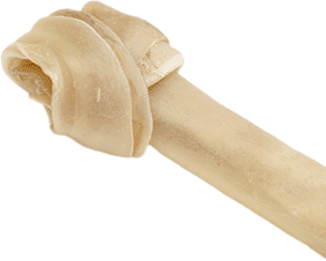


The doggy paddle: a staple swimming move for beginners in the water. But where does this name come from? Naturally, it’s the signature style for pups who love to swim!
If you have an adult Labrador Retriever, you’ve probably witnessed this dog breed’s passion for aquatic fun. Even Lab puppies will frolic in the water once they get used to it.
The truth is that Labs are natural swimmers and have a strong inclination to hop into pretty much any body of water — but why do Labs like to swim? When you look back into this dog’s early gene pool, it’s easy to see why they are strong swimmers. But there’s more to it than that!
Understanding why Labrador Retrievers love the water can help you better understand your furry friend and his needs. This article will cover why Labs enjoy water sports and examine how you can help water-shy Labradors.
When raising dogs, many people assume they have an instinct for swimming. But despite the famous ‘doggy paddle’ move, not all dogs can swim.
Depending upon a dog’s physical traits and abilities, it might struggle to stay afloat. For example, bulldogs have barrel-shaped bodies and short legs, so they can’t swim. That’s why bulldog owners will put a life jacket on their dog when it’s near water.
Things like webbed toes, long legs, and a water-repellent coat — all traits that Labs possess — make dogs excellent natural swimmers. But where do these characteristics come from?
It’s from genetics! Labs are naturally good swimmers because of what they were bred to do.
Give them a kiddie pool or take them to the ocean — it doesn’t matter. They’ll jump right in because Labs were bred to swim and retrieve game. Toss a stick into the water, and your Lab pup will jump right in to fetch it.
When you breed an animal with a clear purpose, specific desirable traits are drawn out over generations. Whether it’s agility, intelligence, loyalty, the ability to swim, or to herd other animals — informed breeding is the biobehavioral science behind all the amazing things dogs can do today.
Here’s an interesting fact: one of the primary ancestors of the Labrador Retriever was called a “water dog.”
Labs descend from the extinct St. John’s water dog breed, hailing from Newfoundland, Canada. Fishermen on the coast relied on these dogs to help them fish. They trained the dogs to retrieve fishing gear and fish that evaded the nets or traps.
St. John’s water dogs were strong dogs with well-muscled chests and black coats. They had all the telltale signs of a natural swimmer that could handle cold water — short, oily coats that repelled water, long legs, webbed feet, and oar-like tails.
These dogs were also known for their boundless energy, loyalty to their owners, and agility — traits that can certainly be useful in other canine working applications, such as hunting and hauling.
In the 1800s, a handful of English noblemen started breeding the now-extinct breed of St. John’s water dogs, transporting them from England to Canada. Their goal was to develop the ideal hunting companion — a dog that could retrieve game instead of fish but could still swim to fetch waterfowl, pheasant, and other small game that the hunters would shoot down over ponds, lakes, and other bodies of water.
Once early breeders started mating the St. John’s water dogs with other breeds, the Labrador Retriever was born! These early Labs were excellent fishing and hunting pals with their unique ability to swim and retrieve fallen game.
Judging by the characteristics of today’s pure-bred Labs — webbed toes, strong otter-like tail, and water-resistant double coat — it’s clear that these early breeders chose the strongest swimmers for their hunting dogs.
That’s why Labradors enjoy swimming and why they’re so adept in the water. This breed has been using their skills to please their owners by retrieving game for centuries. Swimming is second nature for these dogs!
Well, for most of them, at least.
Labrador Retrievers were bred to swim, but not all Labradors enjoy swimming. While American and English Labs both enjoy warm or cold water and will retrieve fish, game, or sticks for their owners, not every dog is alike — even with a natural swimming ability in their genetics.
If your Lab isn’t interested in the water, it could be because of several reasons:
So what can you do if your Lab dislikes water?
If you’d like to help your dog overcome his fear, you can help by creating new, positive experiences with water. For example, to help with bath time fears, spend some time getting him used to sitting in the tub with the door closed without turning on the water. Start small, and eventually, your pup will acclimate to water exposure.
Once adjusted to bathtime, let your Lab observe you and other dogs enjoying a swim. Start with a backyard swimming pool, and eventually, with enough positive experiences, he’ll get used to being around — and in — the water.
Swimming is fun, and it’s great exercise. But it’s also a full-body workout — you don’t want your pup to overexert himself, especially if he’s swimming in deeper water.
So, how long should you let your dog swim? If you’re using swimming to give your dog exercise, 15 to 30 minutes is enough.
But what if your Labrador loves the water so much that he’d stay in for hours if you let him?
As long as your Lab is accustomed to swimming, 30-minute blocks are okay. If your dog isn’t a strong swimmer but still can’t resist the call of the water, start him off with 10-minute sessions three to four times a week. Then, as his stamina increases, you can let him swim for longer.
When it comes to the free-spirited, energetic nature of Labrador Retrievers, swimming is an excellent activity to support their physical and mental health. Here are five reasons why you should let your Lab take a dip in the pool:
What do runners do to stay fit when they’re injured? They hit the pool. Being in water enables your limbs to move easily through their normal range of motion, so injured runners can exercise while supporting their joints.
The same is true for dogs. When Labs swim, it decreases the pressure on their joints, making it an excellent alternative to walking on sidewalks. Additionally, as many dogs age, they develop joint problems. Daily swimming exercises can help keep your Labrador healthy and relieve joint pain.
You probably get stressed sometimes — you’re human! But did you know that your emotions can impact your dog’s stress levels? Instead of dealing with stressful feelings and passing them on to your pup, you can relieve stress by swimming together. You’ll both feel better after just 15 or 20 minutes in the water!
If you have access to warm water, such as those beautiful Floridian beaches or a heated pool, swimming can also decrease pain. Swimming in warm water temperature is also known to help dogs recover faster after intense exercise.
Currently, many dogs are overweight — an estimated 56% of American dogs are obese. But it’s not always easy to tell if your dog has a weight problem. Larger dogs, like Labs, can be overweight but appear to be the right size.
The ideal weight for adult female Labrador Retrievers is a little over 70 pounds, and males should weigh somewhere between the high 70s to low 80s. Whether your vet suggests helping your dog lose a few pounds, swimming will help your Lab reach and maintain a healthy weight.
However, swimming is an excellent activity to help your dog stay in shape. Swimming for about one mile is the equivalent of running for four miles! That means your dog doesn’t have to go far to burn calories and get a solid workout.
Everybody needs time to let loose and have fun, and Labs are no different. These naturally silly, fun-loving dogs thrive when they’re given time to play, especially with their owners.
Whether you swim with your Lab or toss a ball in the water for a round of fetch, playtime strengthens the human-dog bond, which encourages your dog to be loyal to his devoted best friend (you!).
Playtime with owners will also help prevent destructive behaviors because your dog will be more relaxed and confident in his place in the pack.
Once the warmer summer months arrive, it’s time to train your pup to become your next swimming pal. But there are a few things Labrador owners should know before putting a puppy into the water.
While young, Labrador puppies might not have the physical strength to tread water. During their first swimming session, they should start in shallow water. You can fill up a kiddie pool in your backyard and run around on the shore so your puppy can get his paws wet.
Another factor is vaccinations. Until they’re fully vaccinated, it’s best to avoid public pools, lakes, and other bodies of water where bacteria and other microbes roam free.
Chances are your Lab puppy will adore the water at first touch, but there’s no reason to pressure your dog. Remember, your dog’s experiences as a puppy could impact how he perceives the water as an adult.
So keep it positive, relaxing, and fun with low-key bathtime experiences, backyard shenanigans, and puppy-appropriate adventures in the shallows.
Do Labradors tend to like water? Yes! Early breeders wanted strong swimmers who could retrieve things from lakes, rivers, and the sea; thus, the Labrador breed was born. But not all Labradors know how to swim or run head over heels for the water.
As a Lab owner and dog lover, it’s important to work with your pup, go at their pace, and make swimming a positive experience. Eventually, most Labs will take to the water — after all, they are descended from true water dogs!
The White Lab puppies at Snowy Pines grow up on 120 acres of land in the Ozarks, where they play in the water, have fun with other puppies, and explore. Take a look at our available puppies and apply to adopt your new pure-bred White English Retriever swimming buddy!